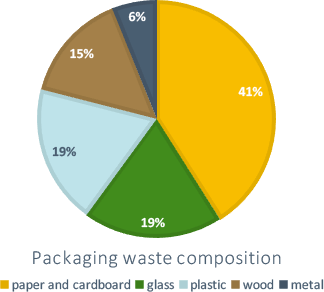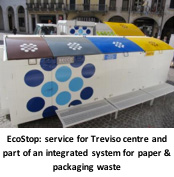
In 2014 about 80 million tonnes of packaging waste were generated in the EU, from both households and commercial activities. That represents about 160 kg/inhabitant.

Paper and packaging waste is a significant source of secondary raw materials such as paper & cardboard, glass, wood, and plastics. At EU-28 level, the recycling rate of packaging waste is rather good (65%), yet there are important discrepancies among Member States, whose recycling rates range from 79% (in Belgium) to 36% (in Poland).
There is still considerable room for improvement, as about 28 million tonnes of packaging waste are not recycled. Furthermore, several countries still operate using comingled collection of paper, metal, plastic, and glass streams, which may be detrimental to the quality and quantity of recycled materials.
Good practices
Municipalities and regions throughout Europe have displayed better performances after implementing a new collection system.

In Italy, for example, a group of municipalities in the Province of Treviso managed to increase the percentage of recycling from 27.2% in 2000 to 85.1% in 2015. The Flanders region in Belgium currently hails a 90% recycling rate for packaging.
Good practices provide lessons on increasing quantities but also for improving the quality of collected materials. The Verdú municipality in Spain, for example, shows that shifting from bring banks to door-to-door separate collection reduces impurities in the collected streams by more than half (details can be found in the R4R factsheet).